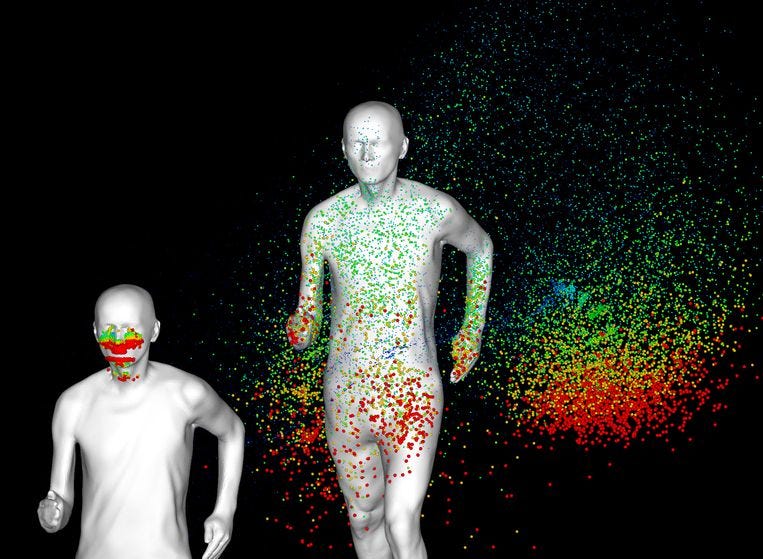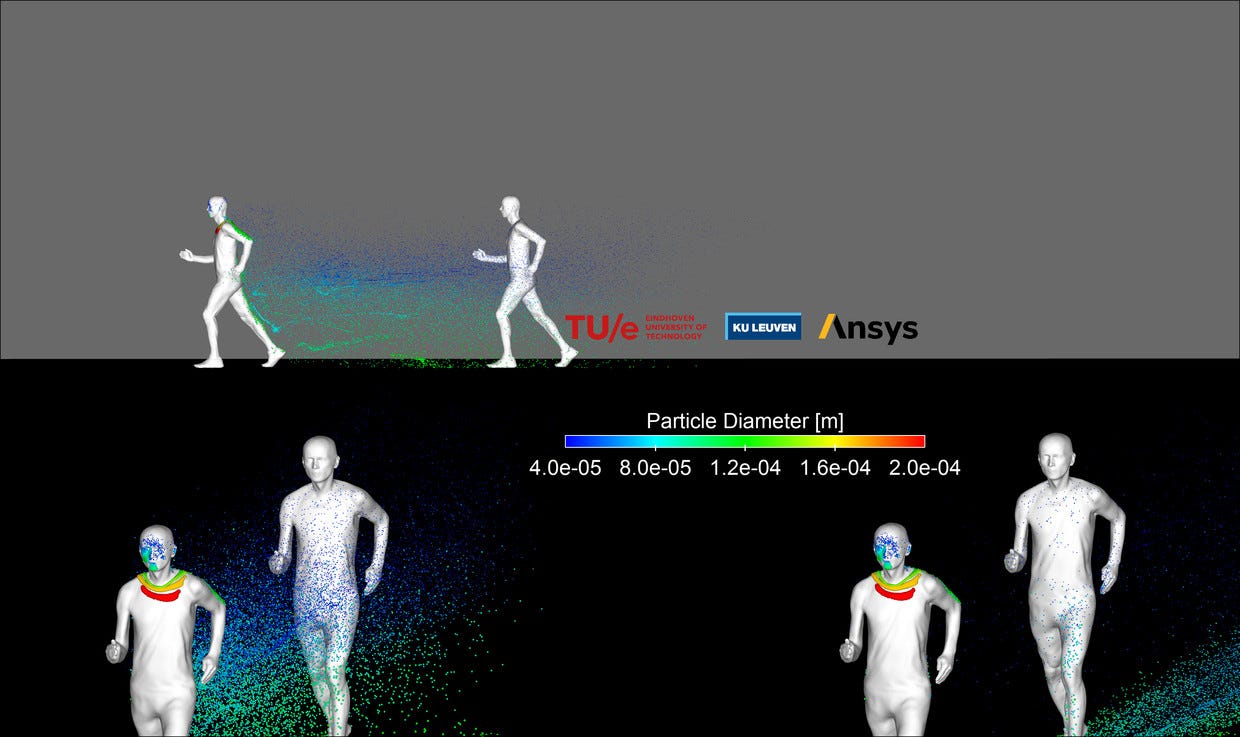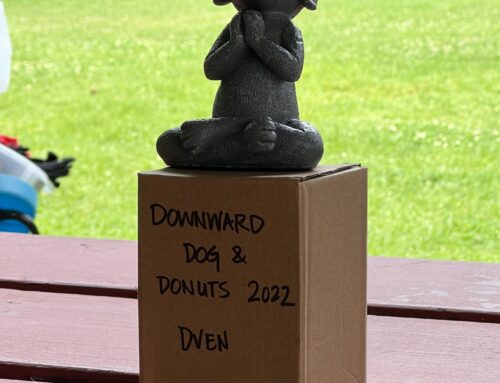Belgian-Dutch Study: Why in times of COVID-19 you should not walk/run/bike close behind each other.

What is a safe distance when running, biking and walking during COVID-19 times? It is further than the typical 1–2 meter as prescribed in different countries!
In a lot of countries walking, biking and jogging are welcome activities in these times of COVID-19. However, it is important to note that you need to avoid each other’s slipstream when doing these activities. This comes out of the result of a study by the KU Leuven (Belgium) and TU Eindhoven (Netherlands). (1)(2)(3)(4)
The typical social distancing rule which many countries apply between 3-6 feet seems effective when you are standing still inside or even outside with low wind. But when you go for a walk, run or bike ride you better be more careful. When someone during a run breathes, sneezes, or coughs, those particles stay behind in the air. The person running behind in the so-called slip-stream goes through this cloud of droplets.
The researchers came to this conclusion by simulating the occurrence of saliva particles of persons during movement (walking and running) and this from different positions (next to each other, diagonally behind each other and directly behind each other). Normally this type of modelling is used to improve the performance level of athletes as staying in each other air-stream is very effective. But when looking at COVID-19 the recommendation is to stay out of the slipstream according to the research.
The results of the test are made visible in a number of animations and visuals. The cloud of droplets left behind by a person is clearly visible. “People who sneeze or cough spread droplets with a bigger force, but also people who just breathe will leave particles behind.” The red dots on the image represent the biggest particles. These create the highest chance of contamination but also fall down faster. “But when running through that cloud they still can land on your clothing” according to Professor Bert Blocken.

Out of the simulations, it appears that social distancing plays less of a role for 2 people in a low wind environment when running/walking next to each other. The droplets land behind the duo. When you are positioned diagonally behind each other the risk is also smaller to catch the droplets of the lead runner. The risk of contamination is the biggest when people are just behind each other, in each other’s slipstream.
On the basis of these results the scientist advises that for walking the distance of people moving in the same direction in 1 line should be at least 4–5 meters (12-15 feet), for running and slow biking it should be 10 meters (30 feet) and for hard biking at least 20 meters (60 feet). Also, when passing someone it is advised to already be in different lane at a considerable distance e.g. 20 meters (60 feet) for biking.
This is definitely information I will be taking into account and it also puts in perspective the closing of busy parks, etc. Perhaps the better way is just running in the street, on your own or at least with sufficient distance. Stay safe…
(3): http://www.urbanphysics.net/Social%20Distancing%20v20_White_Paper.pdf
(4): http://www.urbanphysics.net/COVID19_Aero_Paper.pdf
Original article: http://gladiator-lab.ru/run-during-coronavirus
Robert is an Army combat veteran with service in Vietnam, Europe, the Pentagon, and the Department of State. He is an advocate for disabled veteran awareness and suicide prevention.




I am curious about guidelines for indoor cycling like Cyclebar?